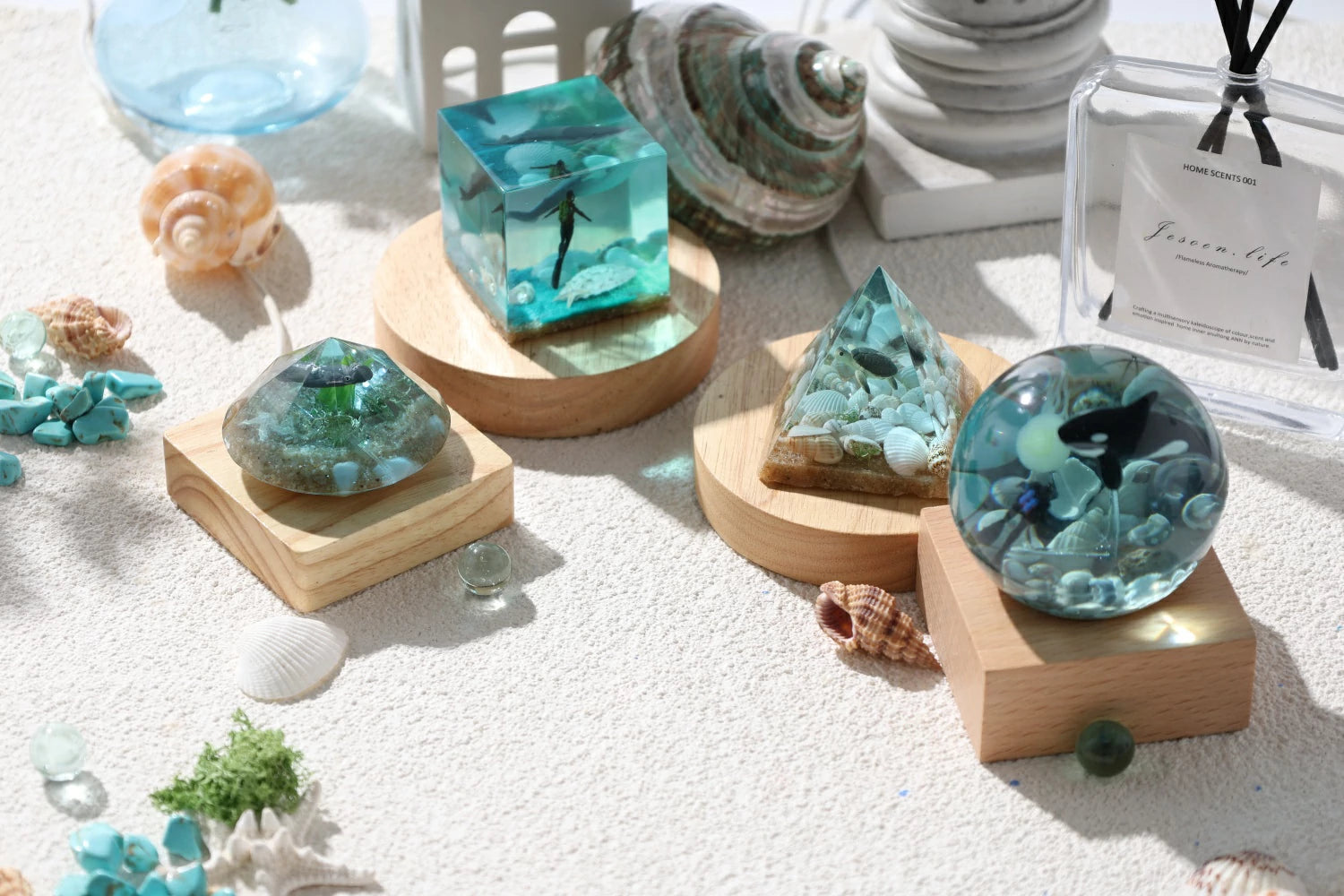Posted by CraftyMaineMom
Etsy: @Craftymainemom
Instagram: @crafty.maine.mom
2020 is the start of a brand new decade, what better way to kick off yours than with a brand new Clock that can either be used as a daily device or even just to remember a important time in your life such as a wedding, an anniversary, a birth of a child, or loss of a close relative or pet. This clock can be easily made with the provided clock gear assembly and hands that are easily put on with a simple twist and push of your finger, no tools required!
1.Preparation Work
Before starting your beautiful new clock, you should make sure your area is level, clean, ventilated, and free of dust or hair. To avoid Resin from coming into contact with your area and to avoid an unnecessary mess, you should consider using something to cover your area with like Wax lined paper or Newspaper. You will also want to be wearing proper safety equipment such as gloves and a mask or respirator to avoid any unwanted toxins in the Epoxy Resin from entering your body. Epoxy Resin is highly toxic while in liquid form or even partially cured so make sure to read all the proper safety information about the resin you choose to use.
After you have you and your working area prepped, pre-plan what design you are going for. This helps to keep your focus on what your doing instead of what you need to do. The thicker, wide spaces insides each number and clock face make it very easy to design basically anything you could imagine. If you would like to have color in your Resin there are many ways to add color such as Alcohol Ink, Peral Powders, and Liquid Pigments, all of which create beautiful designs based on how your using it.
What you will need to start:
1. 2020 Clock Mold and provided Gear Assembly and Clock Hands.
2. Approximately 8oz of Epoxy Resin
3. Proper Safety Equipment
4. Mixing Cups (in Ounces or Milliliter)
5. Stirring Sticks
6. Small Pick (such as toothpicks or a thick unsharpened pin)
7. Device used to remove Bubbles (such as a Degassing Chamber, Vacuum Chamber or Heat gun) **DO NOT USE A TORCH**
8. Colorant or Fillers (Optional)
2.Measure and Mixing Your Epoxy Resin:
3.Coloring Epoxy Resin Before Pouring:
You can color your resin with many different things. The most common colorants used to color resin are Resin Pigments, Alcohol Inks, or Peral Powder or otherwise known as Mica Powder. It never takes much to color your resin and using a little can go a long way. To color your mixed resin simply take your chosen colorant and add a small amount into your mixed resin and stir until it is fully mixed. Adding the colorant as you are mixing can help to determine the opacity of your Resin. To make pieces that have multiple colors separate your resin into multiple cups depending on how many colors you would like to use. You can use multiple colorants in your resin at one time but just be sure not to over do it or the resin may not cure correctly.
4.Pouring your Epoxy Resin 2020 Clock:
Now that you have mixed your resin and have your design layout planned you may start to pour into your Silicone 2020 Clock Mold. It takes about 8 fluid ounces of Epoxy Resin to fill this mold.
5.Removing Clock from your Silicone Mold:
6.Assembling your Clock:
Assembling this clock is so much easier than it looks!
The 2020 Mold kit should come with a small package of parts to assemble your clock. This package contains (1) Clock Gear assembly, (1) Gold plated washer, (1) Gold Plated Nut, (3) Clock Hands (Hours, Minutes, and Seconds).
①
Begin by flipping your 2020 Clock so the back is facing you. Place the Gold washer onto the Gear assembly and slide it down so it sits directly on the back. Once placed slide the entire Gear assembly into the clock’s hole through the back.
②
Once you have placed the clock assembly onto the back, take the gold nut and carefully start to twist the nut onto the gear assembly until it is flush on the face on the clock.
③
After you have the gear assembly attached take your Minute hand and firmly place the clock hand onto the assembly until snug. If done correctly the clock hand will not move unless forced to.
④
After you have placed the minute hand, go ahead and place the hour hand onto your assembly and press firmly until the hand is snuggly in place.
⑤
Now you are ready to place the last piece of your clock by taking the last hand and placing it into the assembly and firmly press until it is tight and secure.
Now that you have attached your hands
Place a battery into the gear assembly, set the time and you now you have a beautiful, handmade, and 100% working Epoxy Resin 2020 clock that you made!







